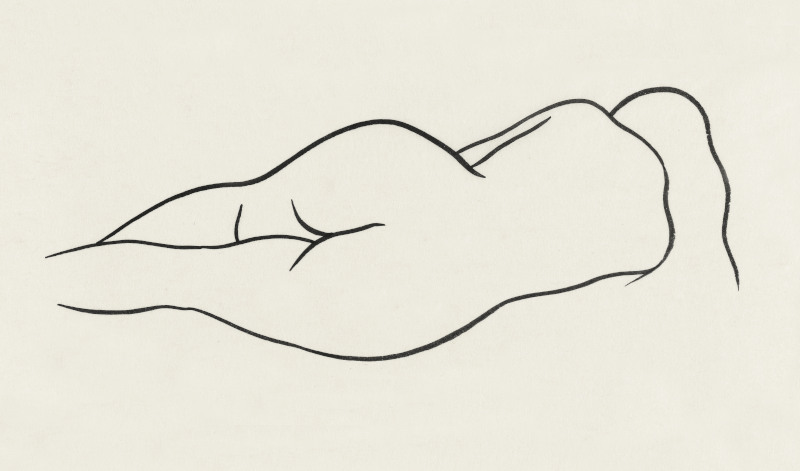Figure drawing remains one of the most challenging, but rewarding genres in sketching. Here we examine some easy techniques for quickly drawing figures, as well as listing some more advanced, famous artworks from art history.
Introduction to Figure Drawings
The curves of the human body have provided great inspiration for artists over the years, and figurative art remains one of the most popular forms of art. With us all being so familiar with the human anatomy, though, accuracy is hard to achieve and any mistakes will immediately be spotted. Study and observation, along with continual practice are required to master this genre, and we provide some tips and techniques for becoming a successful figure artist within this article.
As with many subjects, it is advisable to start with a simple outline before attempting to include much detail, slowly building up an image over time. Repeating the same process time and time again, correcting any mistakes as you go, is the best route to long term success and even the geniuses of the past have had to go through this same process early on in their careers.
List of Figure Drawings and Paintings
We have listed below a good selection of figure drawings and paintings, with some vintage illustrations as well as some stunning paintings in oils and watercolors. These should provide you with the inspiration that you need to produce art of your own, and further below you will find discussion around topics related to figure art, including some tips and techniques for beginners. Some of the simpler options relate to line drawings, where you can see the rawest of techniques at work.
Additionally, we also discuss the different types of tools and materials that you might consider for your sketching, and what are the potential benefits and drawbacks of each option. With new technology arriving all the time, it is also worth focusing on how that can change the ways in which we work into the future. We hope the artworks listed throughout this artwork can inspire you to create your own figure drawings.
Reclining Female by Francois Boucher
Francois Boucher was a classically trained artist who mastered all major artistic genres, both as a draughtsman, but also as a painter. In this example we see a reclining female lying on her side, with her arms supporting her weight. The detail is considerable in this piece, and it can be presented as a completed artwork, going much further than a quick sketch. Shading is added to bring depth to the piece, as well as shadowing, The figure of the young woman is accurately depicted, giving an honest but complementary display of her figure. The reclining posture helps to indicate the artist's flexibility, able to accurately capture the human body is a variety of postures.
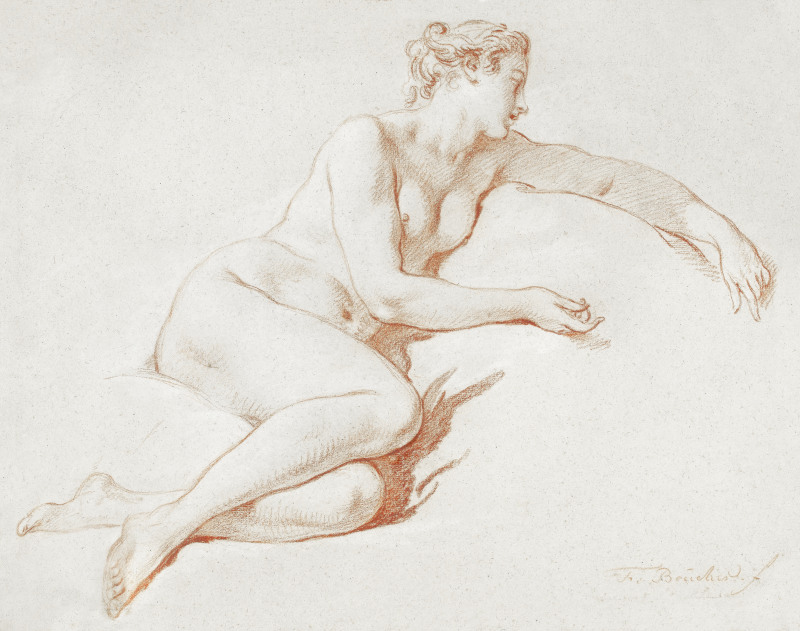 Reclining Female by Francois Boucher (copright free image, courtesy of Rawpixel)
Reclining Female by Francois Boucher (copright free image, courtesy of Rawpixel)
Female Figure from Behind by Ananda K Coomaraswamy
This delightful, minimalist drawing by Ananda K Coomaraswamy captures a female lying down with her back to us. It illustrates how much can be achieved with just a few lines, when combines with artistic experience and flair. One line, for example, captures the lady's hair, and by suggestion brings her head in as well. Her curves are elegantly displayed, and this drawing the celebrates the beauty of the female figure. By tackling the model from behind, new challenges are presented and alternative parts of the body are included. Some may be reminded of the work of Picasso in this inspired line figure drawing.
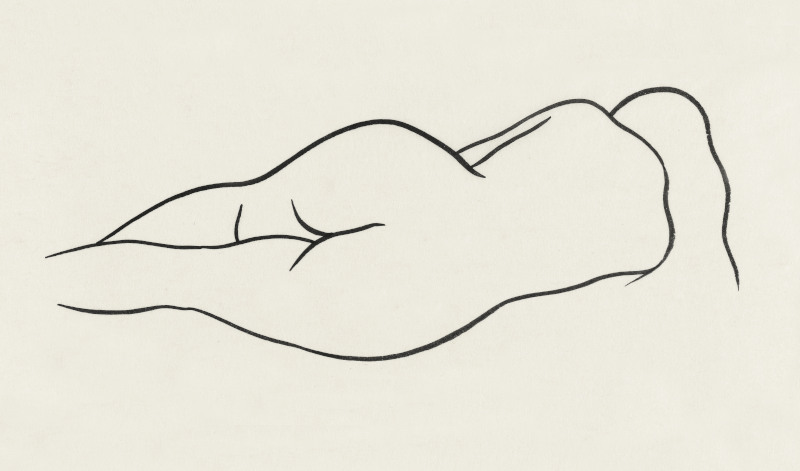 Female Figure from Behind by Ananda K Coomaraswamy (copright free image, courtesy of Rawpixel)
Female Figure from Behind by Ananda K Coomaraswamy (copright free image, courtesy of Rawpixel)
Two Women Embracing by Egon Schiele
Egon Schiele was an extraordinary portrait artist who mastered figurative art as well as anyone of the past few centuries. There was a clear connection between his drawings and paintings, with outlines visible in both. He worked in an expressive manner, twisting and contorting bodies in a way which may not appear realistic, but provides exciting and impressive artworks. The piece below is filled with color in a few blank spaces, but mostly consists of drawn outlines which deliver this multiple portrait of two women in an embrace.
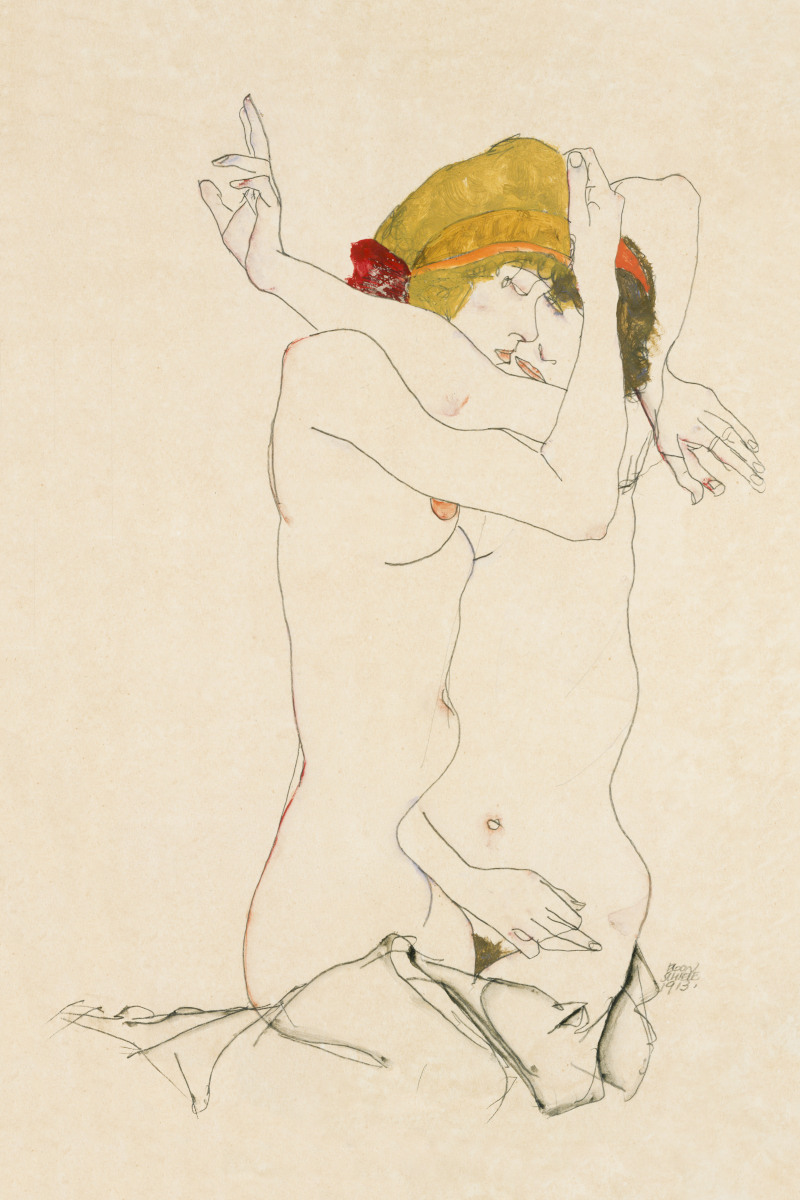 Two Women Embracing by Egon Schiele (copright free image, courtesy of Rawpixel)
Two Women Embracing by Egon Schiele (copright free image, courtesy of Rawpixel)
Vintage Woman Sitting by James Wells Champney
This charming drawing displays a clear understanding of figurative drawing by James Wells Champney. Notice the delicate touches of shading which creates shadows, which also helps to form the muscle structure. Intricate areas, such as between the fingers, are darkened and the facial features are more evolved than the hair. Certain outlines are darker too, providing a structure which the rest of the scene can be built around. This delightful sketch could easily be used as the basis for an oil painting, and is likely to have been constructed by observing a live model.
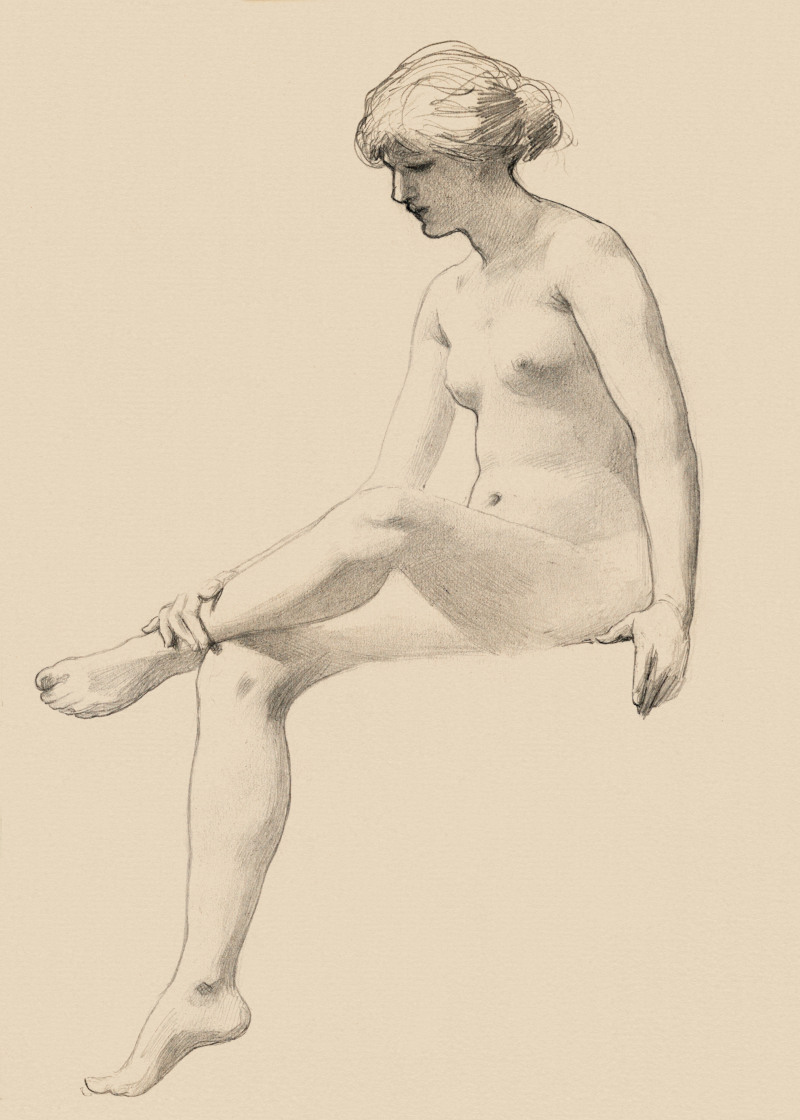 Vintage Woman Sitting by James Wells Champney (copright free image, courtesy of Rawpixel)
Vintage Woman Sitting by James Wells Champney (copright free image, courtesy of Rawpixel)
Women Embracing, Vintage Illustration, Two Figures by Auguste Rodin
Rodin is best known as a sculptor, but regularly designed his creations first using sketch work. Here we find a relatively simple outline, for a creation which itself did not become a sculpture, and may have been completed purely for the purpose of practice and skill development. Rodin remains one of the most respected sculptors in history, using a modern approach that relied on his talents as a draughtsman.
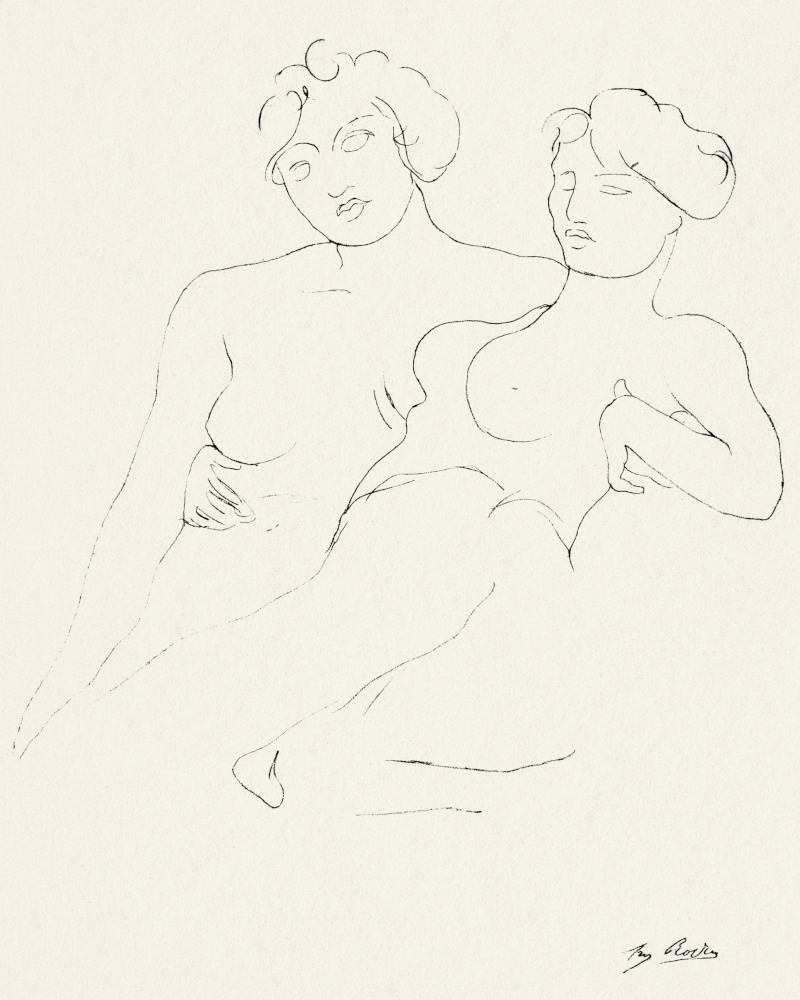 Women Embracing, Vintage Illustration, Two Figures by Auguste Rodin (copright free image, courtesy of Rawpixel)
Women Embracing, Vintage Illustration, Two Figures by Auguste Rodin (copright free image, courtesy of Rawpixel)
Bather Drying Herself Drawing with Back Muscles by Edgar Degas
Edgar Degas was a master of portraiture and in this example shows his understanding of the muscles of the back, capturing a bather as she dries herself. Her makes use of two tones of pastels in this artwork, and leaves the entire background bare, allowing the original tones of the paper to show through. The lady has her head bowed as she dries her hair, and this presents interesting challenges to the artist, who has to include the hair hanging down, as well as the lady being bent over, stretching the muscles in her shoulders. Degas was fascinated by ballet dancers, and learnt much about movement and posture in studying local dancers.
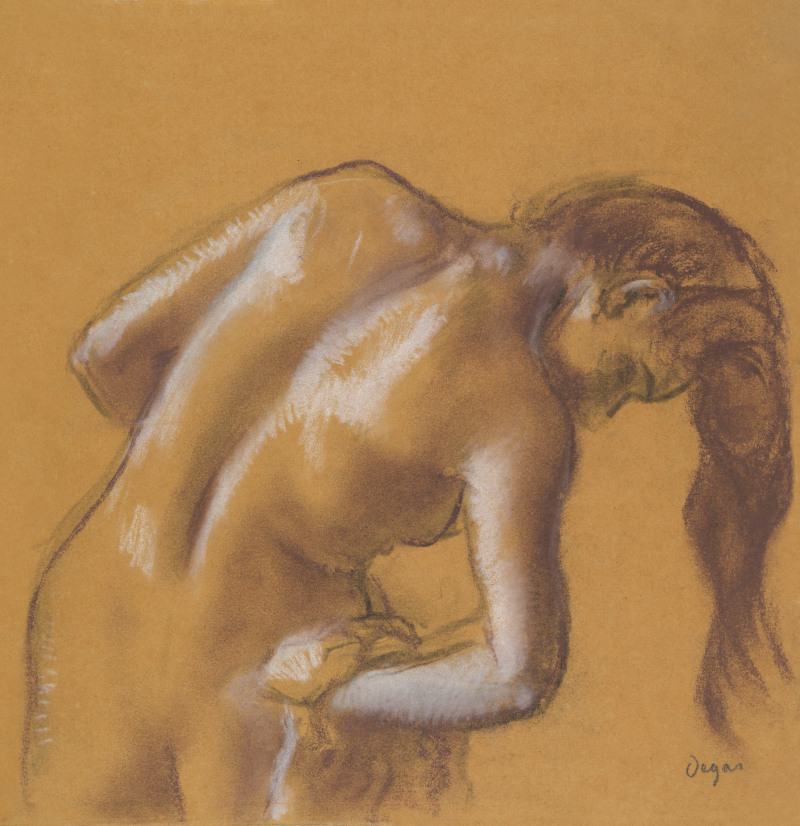 Bather Drying Herself Drawing with Back Muscles by Edgar Degas (copright free image, courtesy of Rawpixel)
Bather Drying Herself Drawing with Back Muscles by Edgar Degas (copright free image, courtesy of Rawpixel)
Seated Dancer Study Drawing by Edgar Degas
Here we find a seated dancer being studied by Degas. He uses white pastels to add some interest to the work, but most detail is completed using a darker tone. The dancer is perched on a chair, with her face facing away from the artist. Across his career, Degas captured dancers many, many times and also spent some time researching horse anatomy for a series of paintings completed in and around horse race meetings in Paris. He remains one of the most respected French figurative artists, both in painting and drawing mediums, and his work is helpful as a study guide as well as being suitable to be hung within your own home.
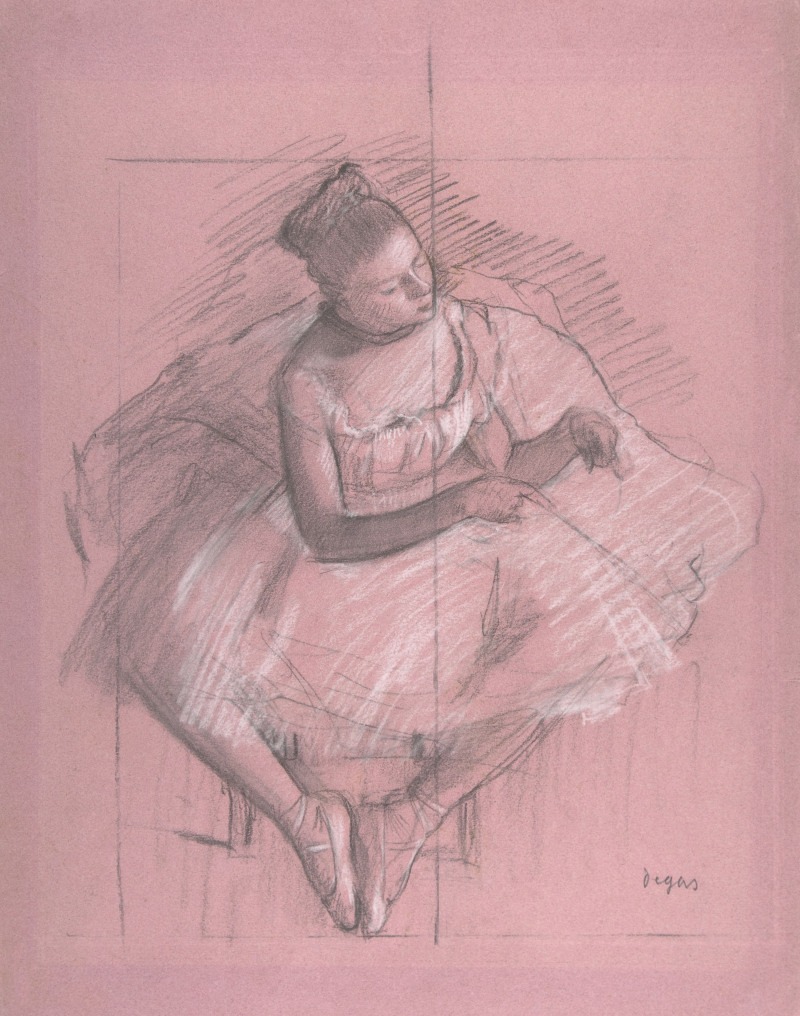 Seated Dancer Study Drawing by Edgar Degas (copright free image, courtesy of Rawpixel)
Seated Dancer Study Drawing by Edgar Degas (copright free image, courtesy of Rawpixel)
Female line art drawing by Egon Schiele
This head portrait indicates how to draw a face accurately, and this composition was unusual for Schiele, as normally he focused on full figures. We find his original sketch lines, indicating how he built up the face over the time which might give beginners a few pointers on how to put different parts of an artwork together.
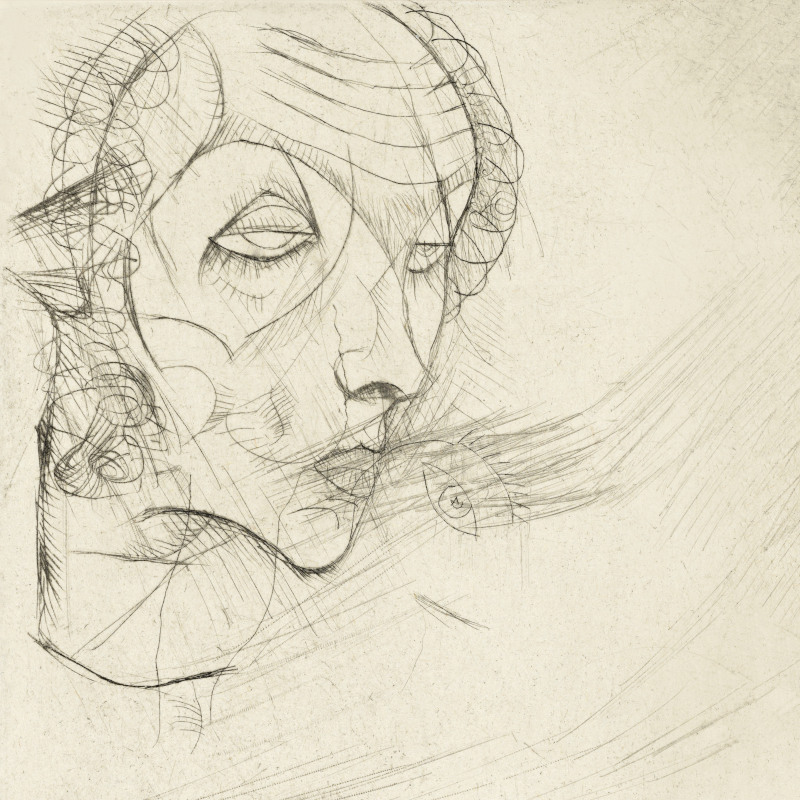 Female line art drawing by Egon Schiele (copright free image, courtesy of Rawpixel)
Female line art drawing by Egon Schiele (copright free image, courtesy of Rawpixel)
Portrait of a Boy by Egon Schiele
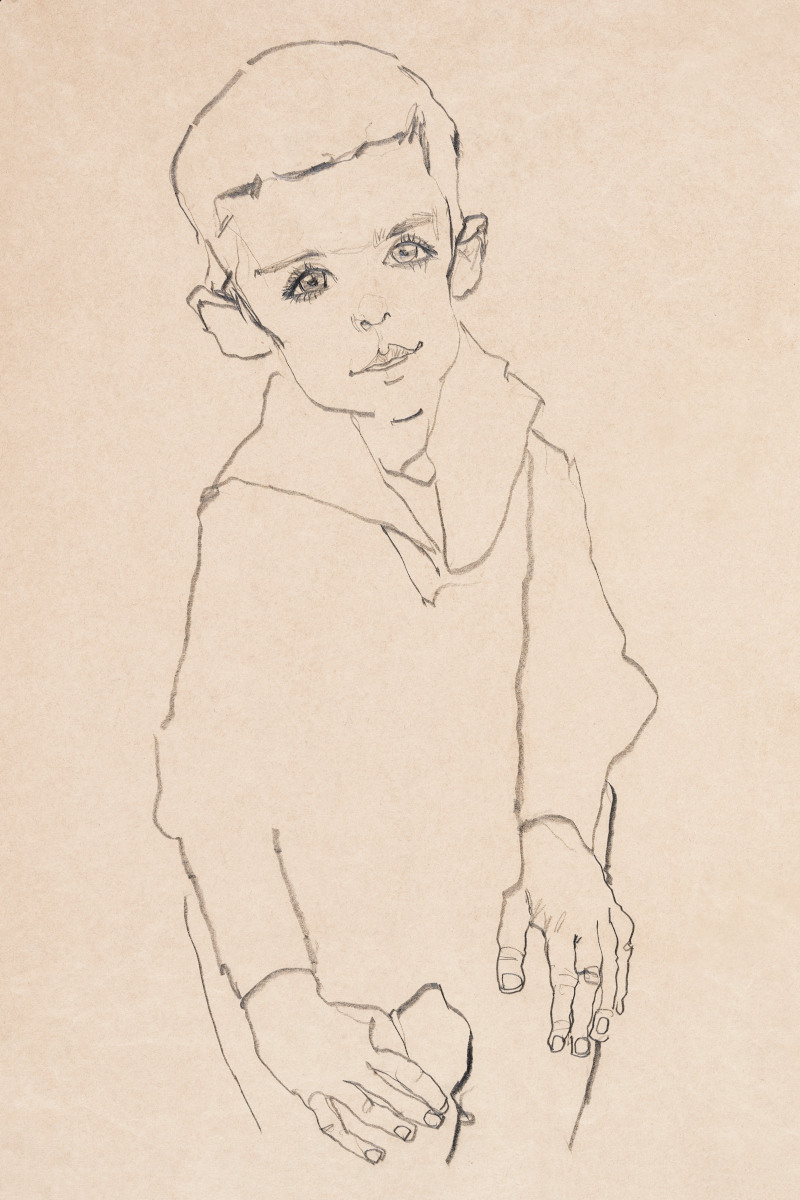 Portrait of a Boy by Egon Schiele (copright free image, courtesy of Rawpixel)
Portrait of a Boy by Egon Schiele (copright free image, courtesy of Rawpixel)
Muscular Male Academy Model, back view by Gustav Klimt
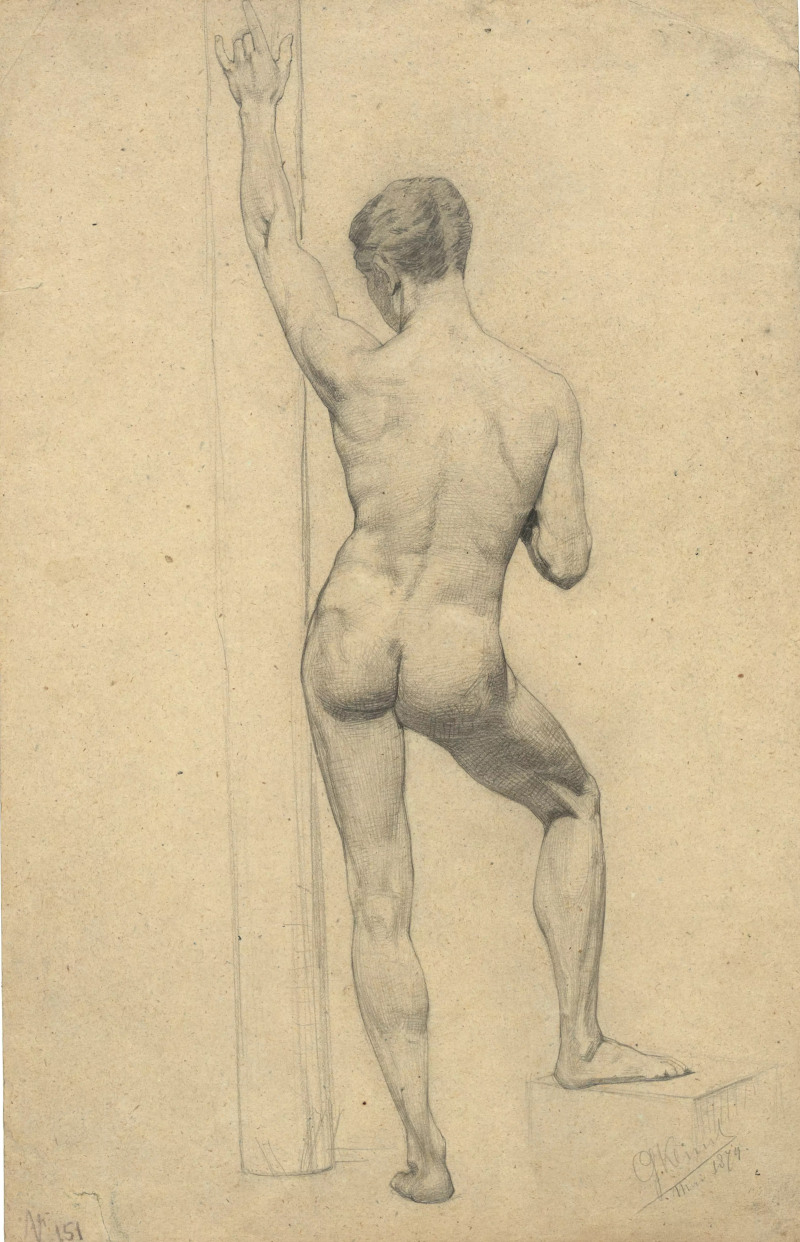 Muscular Male Academy Model, back view by Gustav Klimt (copright free image, courtesy of Rawpixel)
Muscular Male Academy Model, back view by Gustav Klimt (copright free image, courtesy of Rawpixel)
Two Studies of a Seated Woman with Long Hair by Gustav Klimt
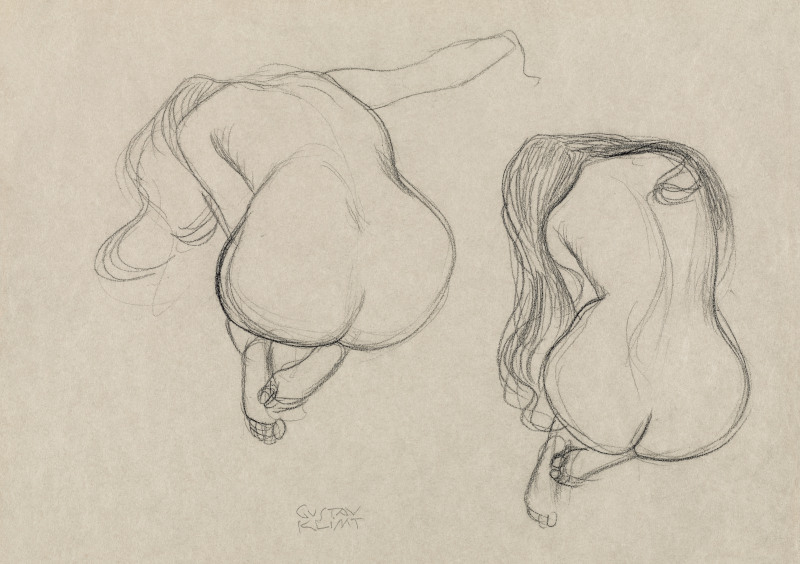 Two Studies of a Seated Woman with Long Hair by Gustav Klimt (copright free image, courtesy of Rawpixel)
Two Studies of a Seated Woman with Long Hair by Gustav Klimt (copright free image, courtesy of Rawpixel)
Portrait of a Woman by Gustav Klimt
Klimt was a master of portraiture and here we find him sketching a female with relatively few strokes of the pencil. Perhaps his most famous display of figurative art was in The Kiss, which itself has become one of the most famous paintings in history. He achieved such a standard by practicing his portraiture regularly, normally in pencil sketches similar to the piece found here. He would fill sketchbooks endlessly, making use of live models once he was able to afford them, later on in his career. These talents could then be extended directly into his oil paintings.
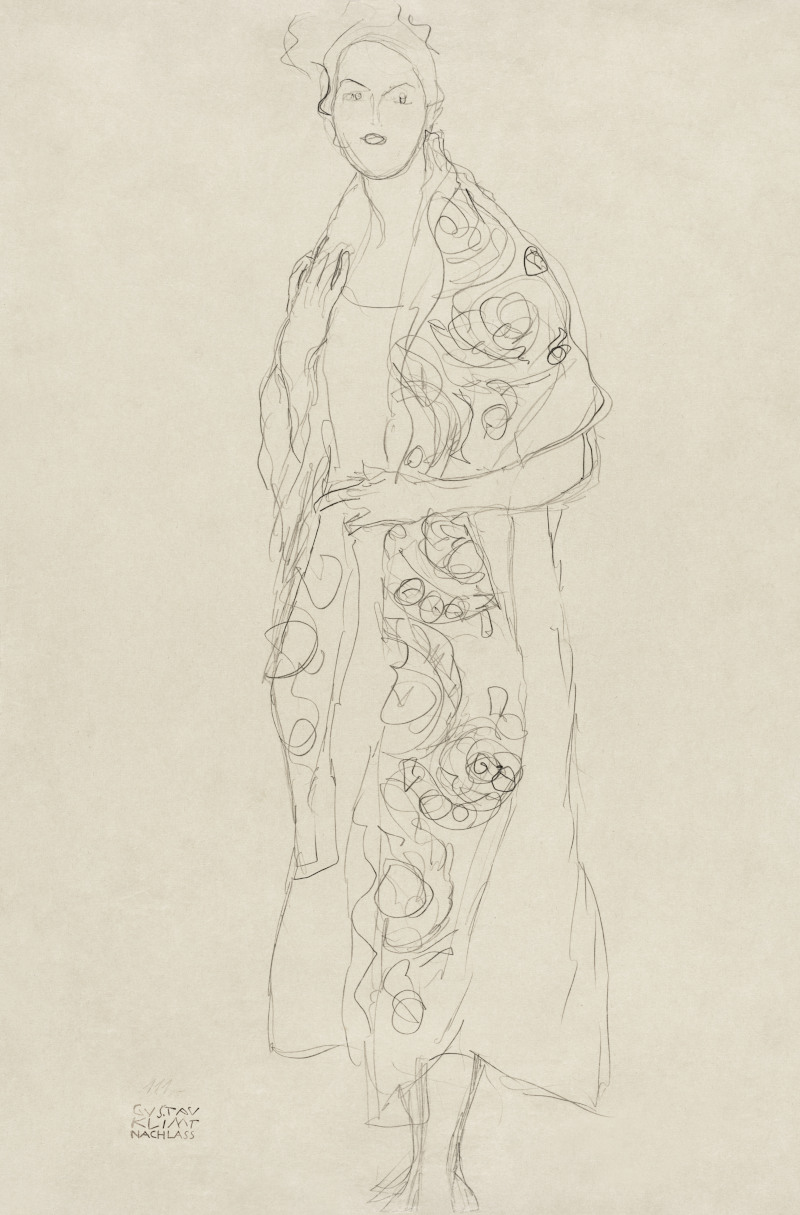 Portrait of a Woman by Gustav Klimt (copright free image, courtesy of Rawpixel)
Portrait of a Woman by Gustav Klimt (copright free image, courtesy of Rawpixel)
Introduction to Figure Drawing
Figure drawing allows us to delve into the complex subject of human anatomy, and presents many opportunities, such as with different postures, movement, and also the variety found from one person to the next. Indeed, artists have made their own reputations based on the types of subjects that they cover, such as Peter Paul Rubens who famously took on full-bodied women within his work.
The figure genre includes a number of key foundational skills which will benefit you in other genres, such as with proportion, perspective, and movement, whilst observational methods must be developed in order to produce accurate work. The great masters such as Leonardo would practice for hours, carefully observing the human anatomy to slowly improve over time.
Understanding the Human Form
When studying and depicting the human form, there are many elements to consider. Accurate figure drawing requires a strong understanding of what lies below the surface, and not just the elements that we see directly. For example, in understanding the bone and muscle balances, we can accurately deliver the contours of the body. Proportions and body ratio helps us to make everything believable, and a number of theories have been published around how to measure the relative sizes of the different parts of our body.
As one moves further into this genre, you will need to consider flexibility of joints, the impact of age, and also the very intricate balance of the human face, which is an area that requires particular attention. All of these elements have been studied for centuries, with ideas documented in how to deliver them accurately and most of these principles remain entirely relevant today.
Materials and Tools
There are many different options available to you for drawing, and much will depend on your personal preferences. Most of these materials and tools have been around for centuries, and not really changed an awful lot, but in recent years new opportunities have emerged with regards digital art. Now one can use a tablet device to sketch art, and some even prefer this approach.
Those working on paper can choose between sketchbooks, drawing paper and also watercolor paper. In most cases, beginners will use loose pieces of paper before eventually transitioning to sketchbooks, in which they can track their progress over time. The drawings themselves can then be completed with any of charcoal, ink, pencils, conté crayons, pastels and coloring pencils. The beginners are advised to start with a simple pencil, that can normally be found lying around the house, and then expand from that as you improve your technique and become curious about other options.
As you progress, you can try out different types of erasers, experiment with digital art tools and software, and also seek out different inspiration and training from a variety of sources. Practice and observation are the best methods to progress, with online videos, published books and in-person training all offering their own benefits.
Getting Started with Figure Drawing
When getting started is is advisable to find a quiet place one your own in which to concentrate on your art. This may be hard to find for some, but normally there is a small window of opportunity each day. You will then need to prepare something to work from, which is unlikely to be a live model in the first instance. You may trace some existing images, perhaps from a book or magazine, and this can be a great way of learning the key parts of the anatomy, and how to depict them accurately.
At the start, it is best to slowly build up the figure one part at a time. Some books can guide you on proportions, as doing the basics wrong can be impossible to fix later on. Many will start with loose, light strokes of the pencil, where they are only working approximately, before becoming stronger in touch as they move closer to their preferred look. It is probably best not to focus too much on facial features at the start, and this is amongst the most challenging of subgenres.
Gesture Drawing and Quick Studies
Gesture drawing can be a truly enjoyable method of sketching which can help us to build confidence early on. It involves working quickly and loosely, without overthinking what you are doing. This relaxed approach can avoid becoming too downbeat when you first start off, and just enjoying the process. It can be particularly useful if there is movement involved in the subject that you are drawing, such as a sprinter in side profile, or a child running down the street.
Over time, your quick sketching will familiarise yourself with different parts of the anatomy, without having to focus too hard. You will also notice how different limbs and joints interact with each other. It is not wise to focus too hard on precise detail early on, and this method helps you to just embrace the outlines of the body first.
Blocking in the Figure
Blocking in a figure involves laying down basic shapes which form the main anatomy, before worrying about any further detail. Once you have completed some gesturing, with lines of movement, you can then start to fill in small blocks and shapes to represent key elements of the body, such as limbs, the head, the torso, etc. This is relatively easy and quick to do, and is a great method of building a solid understanding of anatomy.
As you practice the process of blocking in the figure, you will improve in the key areas of the body, such as head alignment, angles of the shoulders and tilting hips which will often trouble beginners. Curves and straight lines will slowly combine to deliver the main limbs, along with the overall flow of each body section.
Measuring and Proportion
Practicing proportion and measurements within figure drawing is a crucial technique in order to produce accurate work. In order for the whole to work effectly, each individual element must be sized appropriately, just as it needs to interact with the rest of the body in a believable manner. Whilst observing the different elements time and time again, there are also some techniques to learn from that will help, such as the grid method, in which an existing image can be reproduced correctly.
A number of artistic studies have also been completed which can advise on the correct ratios in size between different parts of the body, and following these should lead to more accurate results. Some work from the size of the head, for example, to determine the correct proportions of other elements, though this is only based on averages across different humans, so a live model may not precisely fit this approach.
Showcasing Your Figure Drawings
There are many methods to show off your work today, thanks to the rise in social media. Many will be shy at first, perhaps just showing a friend or family out of interest. Those a little more bold might publish their work onto social media profiles in order to get feedback, but typically those with whom you are familiar will only look to give positive feedback, regardless of the quality of the work itself. As artists progress they might try exhibiting at local galleries or temporary exhibiting spots, though some will be selective on which work they include.
Digital Tools for Figure Drawing
Working with digital tools can allow you to build up an image slowly, making corrections easily as you go. Individual lines can even be twisted and lengthened, using software. Equally, colors can be filled and changed in seconds. One downside, though, is that you won't have quite the same feeling of physically sketching on textured paper, which can have a therapeutic effect. Those looking to sketch on the move can also do so without taking many tools with them, and potentially could share their work from the same device.
Alongside digital art, technology also provides many tutorials on its use. Companies will attempt to promote their products, whilst other artists will happily share their experiences on how to draw certain items, sometimes even sharing their own files that might provide a helpful starting point for your own work.
Conclusion
To conclude, we must remind everyone that figure drawing is hard to master, and patience is certainly required. Even the great masters had to practice for hours on end in order to achieve the levels of accuracy that they did. Studies can help in achieving good quality work, and there is no need to re-invent the wheel when so many other artists have already overcome the difficulties that you may initially face. There is also many aspects to figure drawing to consider and master over time, including proportion, movement and postures.
All the challenges, ultimately, help to make figure art one of the most rewarding genres to take on. It can also be mastered over time - there is no need to try to get everything right from day one, and regular practice, patience and observation are the best keys to success in the long term.



